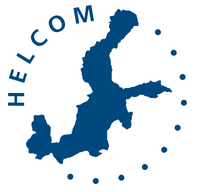Overall the protection of the Baltic Sea through HELCOM MPAs is substantial – the coverage of the areas is at first-rate 12 %Adequacy and connectivity of the MPA network are however not at sufficient levels for meeting the targets set for ecological coherence in the Baltic Sea region “>The Baltic Sea has in terms of areal coverage the highest protection of all European marine regions; 12% of the HELCOM area is designated as marine protected areas () thus, the target set by the UN Convention on Biological Diversity of conserving at least 10% of coastal and marine areas has been reached in the Baltic Sea.> >>The network of coastal and marine protected areas in the Baltic Sea, or HELCOM MPAs, is however not yet ecologically coherent, concludes the new HELCOM . A coherent network, an achievement only possible through cooperation between the Baltic Sea countries, would ensure that the MPAs in the Baltic Sea are providing protection beyond the individual sites. Satisfactory coherence is important as it would contribute significantly to the biological diversity in the Baltic Sea and to favourable status of habitats and species, which are both major goals for HELCOM.>> Two aspects considered by the report regarding ecological coherence of the MPAs are at acceptable level: representativity and replication. Representativity, or areal representation, refers to the different types of geographical features and broad scale habitats, and replication to a set of indicative species and biotope complexes and broad scale habitats. Improvements are however needed especially in two aspects of ecological coherence of the MPAs: adequacy, which considers the quality of the network, and connectivity, which measures how well the network supports migration and dispersal of species. Networks of marine protected areas in the Baltic Sea. The assessment also proposes a number of actions for improving the network of HELCOM MPAs. They include, for instance, enhancing the protection of threatened species, biotopes and biotope complexes within the MPAs, as the reporting by countries so far indicates surprisingly few threatened species and biotopes as being protected in the sites. In addition, the target for areal coverage of MPAs has not yet been reached in all sub-basins or in waters beyond territorial waters. The assessment is based on data in the , renewed and launched in late 2015. The ecological coherence assessment follows up on the commitments made in a HELCOM Recommendation () in 2014, in which the Contracting Parties have agreed to establish an ecologically coherent and effectively managed network of coastal and marine Baltic Sea protected areas. Print copies of the Ecological coherence of the marine protected area network in the Baltic Sea (BSEP 148) can be requested from HELCOM Secretariat. * * *Note for editorsThere are currently already 174 covering almost 12% of the marine area, making the Baltic Sea one of the first regional seas in the world to reach the UN target. The aim of the coastal and marine Baltic Sea protected areas (HELCOM MPAs) is to protect valuable marine and coastal habitats in the Baltic Sea. This is done by designating sites with particular nature values as protected areas, and by managing human activities within those areas. Each site will have its unique management plan. The Baltic Marine Environment Protection Commission, usually referred to as , is an intergovernmental organization of the nine Baltic Sea coastal countries and the European Union working to protect the marine environment of the Baltic Sea from all sources of pollution and to ensure safety of navigation in the region. Since 1974, HELCOM has been the governing body of the ‘Convention on the Protection of the Marine Environment of the Baltic Sea Area’, more commonly known as the Helsinki Convention. * * *For more information, please contact Ulla Li ZweifelProfessional SecretaryHELCOMTel. +358 46 850 9198Skype: helcom64E-mail: ullali.zweifel(at)helcom.fiJohanna LaurilaInformation SecretaryHELCOMTel: +358 40 523 8988Skype: helcom70E-mail: johanna.laurila(at)helcom.fi
The coverage of coastal and marine protected areas in the Baltic Sea, or HELCOM MPAs, is at first-rate 12 % – however the network of MPAs is not yet ecologically coherent.
